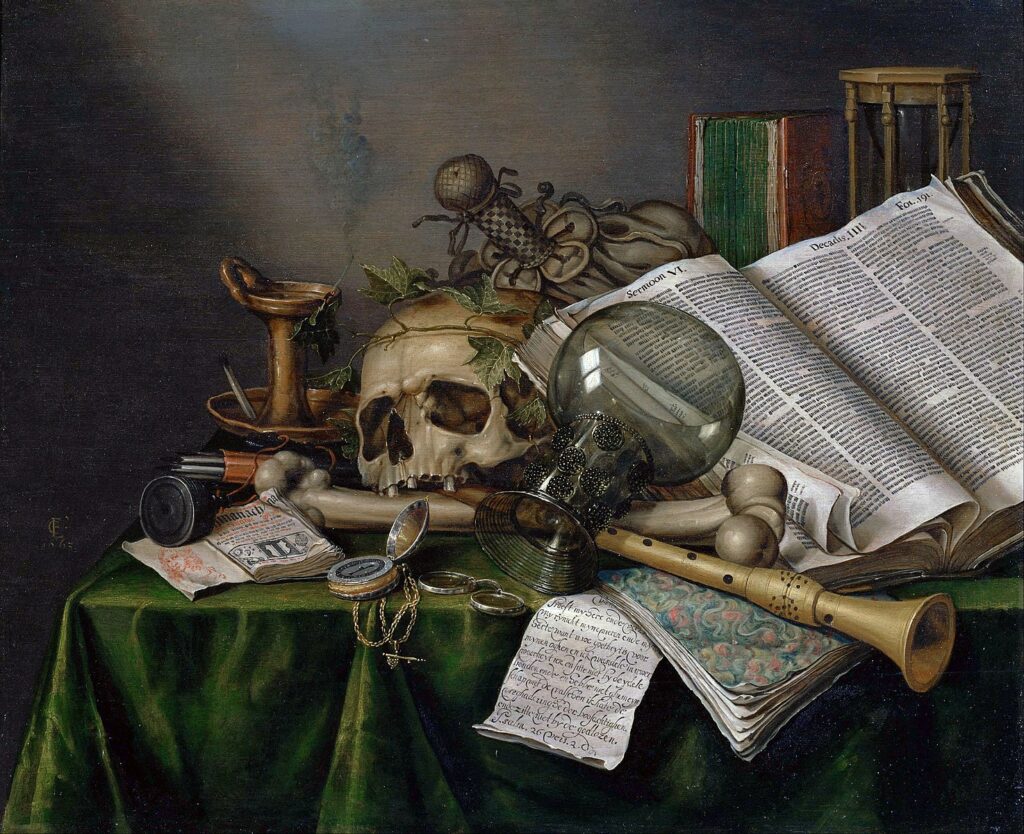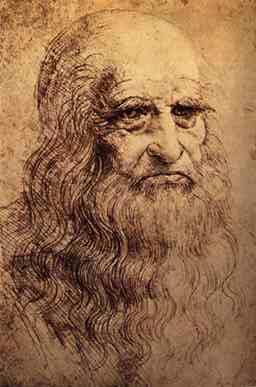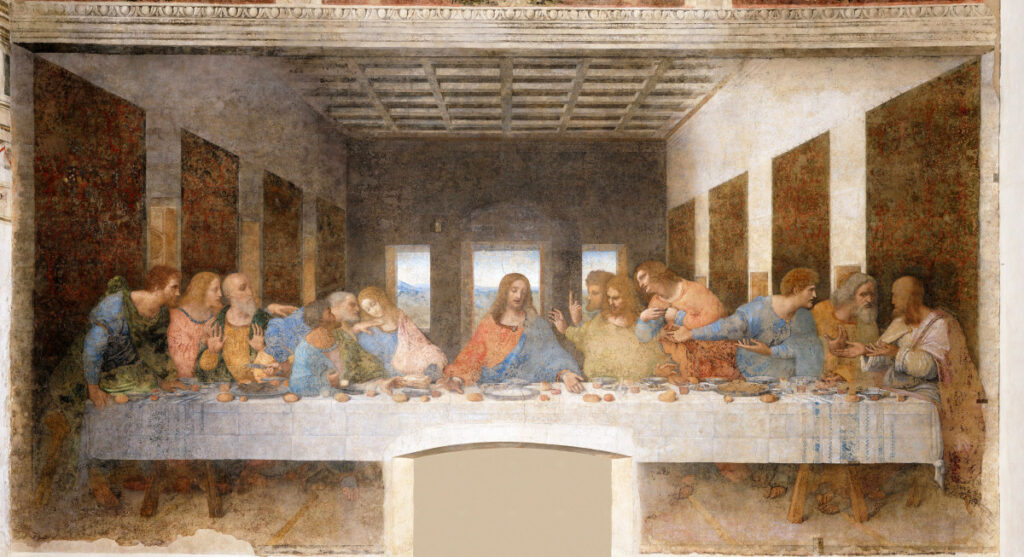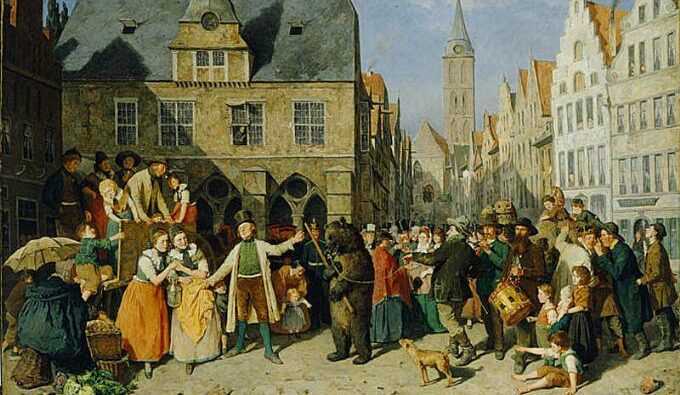In the golden age of Renaissance Italy, a new and influential concept emerged. A concept that celebrated the boundless potential of humankind.
This idea was embodied by the Universal Man, or “Uomo Universale” in Italian.
The idea of the Universal Man, sometimes also referred to as the Renaissance Man, praised individuals who excelled in all aspects of life.
It was inspired by the belief that knowledge is power. These ideal men sought to expand their intellectual horizons and skills beyond the confines of their professions. This led them to groundbreaking discoveries, magnificent works of art, and genre-defining writings.
Whether it was architecture, painting, writing, poetry, scientific endeavors, mathematics, or philosophy, Renaissance men could be expected to have their hands in most, if not all, aspects of human ingenuity and creativity.
From Leon Battista Alberti to Leonardo da Vinci, these individuals not only embodied the spirit of the Renaissance, but also continued to inspire people throughout the centuries, and even today.

Origins and Development in Renaissance Italy
The idea of a Universal Man, or Uomo Universale, emerged during the Renaissance in Italy during a time of great intellectual and artistic innovation.
This new, 15th-century ideal developed out of the philosophy of humanism. It placed the individual human intellect at the center of its concerns and encouraged critical thinking and learning.
Humanists, particularly in the city of Florence, embraced the idea of the Uomo Universale. This is the idea of a versatile individual who was educated in all branches of knowledge. A person capable of producing innovations in a range of subjects.
A polymath is another common description of such a person.
This idea came to be embodied by many individuals. The first and original inspiration was likely the Italian humanist Leon Battista Alberti. Alberti, born in 1404 in Genoa, was an author, a poet, an architect, a linguist, and so much more.
He was celebrated both for his beauty and great physical strength. He also had a diverse range of talents and accomplishments across such fields as architecture, painting, music, and writing.
The concept of the Universal Man, inspired by Alberti, was born out of a desire to break free from the narrow confines of medieval dogma. It sought to embrace the boundless potential of the human mind.
As Alberti put it, “A man can do all things if he will.”
Characteristics of a Universal Man
Whether called a Universal Man, a Renaissance Man, or a polymath, the characteristics of such an individual are the same.
Such a person was expected to be well-rounded and gifted in various areas of knowledge. This encompassed art, science, mathematics, and philosophy.
They strived to develop themselves physically as well as socially. They had to succeed in athletics, feats of physical strength, social events, and accomplishments in the arts.
These Universal Men were usually writers and artists by trade. They were often familiar with the works of classical philosophers such as Aristotle. They were often formally educated, but could also be self-taught. They typically spoke and read multiple languages, notably Latin and Greek to engage with the classics.
Most importantly, they had an unquenchable thirst for learning and knowledge.
Many were inspired by key individuals who exemplified the ideal, such as Leon Battista Alberti and Leonardo da Vinci. They were both incredibly skilled and world-renowned in various areas such as painting, architecture, music, mathematics, and science.
Altogether, a Renaissance man was a well-rounded, versatile individual with a wide range of skills and knowledge of many subjects.
The Archetypal Renaissance Man – Leonardo da Vinci
Leonardo da Vinci, an Italian polymath who lived during the Renaissance, is widely recognized as the epitome of the “Universal Man” ideal.
Born in 1452, he displayed exceptional artistic talent at a young age. He quickly established himself as a master painter, sculptor, and architect.
Leonardo’s keen curiosity and thirst for knowledge led him to explore numerous other fields. These included science, music, invention, and writing.
He was also a skilled musician. He played the lute and composed his own songs. He also designed a wide variety of ingenious machines and devices, some of which were far ahead of their time.
After completing his apprenticeship, he began working on his own. He started to produce some of the most famous works of art in history, such as the Mona Lisa, The Last Supper, and Vitruvian Man.
But Leonardo’s creativity and inquisitive mind were not limited to the arts. He conducted extensive studies of anatomy, botany, geology, and engineering. He produced numerous sketches, diagrams, and notes that revealed a profound understanding of the natural world.
He also made significant contributions to the fields of mathematics, optics, and astronomy.
What set Leonardo apart from other “universal men” of his time was not only his vast range of interests and talents but also his ability to connect seemingly disparate fields of knowledge.
He saw patterns and similarities in everything, from the human body to the motion of water. He was a true systemic thinker, who recognized the interconnectivity of all things. He sought to understand the underlying principles that governed the universe.
In short, Leonardo da Vinci was not simply a master artist, inventor, or scientist but a true Renaissance Man whose multifaceted talents and boundless curiosity continue to inspire people to this day.

Other Examples of Universal Men
Throughout both the Renaissance and all of history since, there have been plenty of other Universal Men that stand out.
During the Renaissance, there was Nicolaus Copernicus. He was a polymath with expertise in many fields including astronomy and politics.
There were others like Michelangelo Buonarroti – a celebrated artist and poet. And Niccolo Machiavelli – an influential political philosopher and writer. And also, Raphael – a renowned painter and architect, who can all be considered Universal Men.
Even the famous Galileo Galilei can be considered a Renaissance Man. He was an astronomer, a mathematician, and a physicist.
Although the Renaissance ended centuries ago, there have been plenty more such figures since.
Ibn Khaldun was a prolific Arab sociologist, philosopher, and historian. He was widely considered one of the greatest social scientists of the Middle Ages.
Akbar the Great was a prominent Mughal leader who demonstrated expertise in various fields, including theology, carpentry, and technology.
Benjamin Franklin, as an American inventor and political theorist among so much more, was certainly a Renaissance Man in his own right.
Plenty more examples of the Universal Man exist throughout history, their contributions continuing to make their mark today.
References
“Renaissance Man.” Encyclopædia Britannica, Encyclopædia Britannica, Inc., https://www.britannica.com/topic/Renaissance-man.
“The Universal Man.” The Science of Leonardo: Inside the Mind of the Great Genius of the Renaissance, https://erenow.net/biographies/the-science-of-leonardo-inside-the-mind-of-the-great-genius-of-the-renaissance/4.php.

